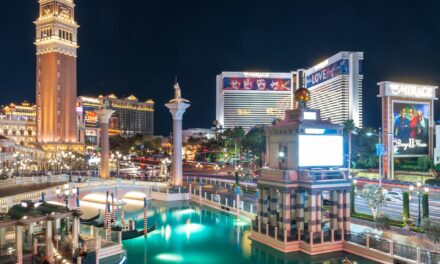Clifton, located in Passaic County, New Jersey, boasts a rich history that spans from its early indigenous roots to its development into a thriving suburban community.
This blog post explores the key phases of Clifton’s history, highlighting significant events and transformations that have shaped the city over the centuries.
Table of Contents
Indigenous Beginnings
Lenape People
Before European settlers arrived, the area now known as Clifton was inhabited by the Lenape people.
The Lenape were indigenous to the region and lived in harmony with the natural environment. They engaged in agriculture, hunting, and fishing, utilizing the Passaic River valley’s fertile lands and abundant resources.
The Lenape’s deep connection to the land is integral to Clifton’s early history.
European Settlement
Dutch and English Settlers
In the 17th century, Dutch settlers were among the first Europeans to explore and settle in the area.
The Dutch established several communities in what is now Passaic County, engaging in farming and trade. They were later followed by English settlers after the British took control of the region in 1664. These settlers developed small farms and began establishing the town’s early foundations.
19th Century Development
Industrial Growth
The 19th century brought significant industrial growth to Clifton.
The construction of the Morris Canal in the early 1830s played a crucial role in Clifton’s development. The canal facilitated the transportation of coal and other goods, boosting local industry and commerce. Factories and mills began to emerge, transforming Clifton from a rural farming community into an industrial hub.
Formation of Acquackanonk Township
In 1693, the area was originally part of the larger Acquackanonk Township.
Acquackanonk Township was a significant administrative unit that included parts of present-day Clifton, Passaic, and Paterson. The township’s formation marked an essential step in the area’s development, paving the way for more structured governance and community planning.
20th Century and Incorporation
Incorporation as a City
Clifton was first incorporated as a city on April 26, 1917.
The incorporation of Clifton marked a significant milestone in its history. It provided the community with greater autonomy and the ability to govern itself more effectively. This period saw the establishment of essential municipal services, schools, and infrastructure.
Post-World War II Expansion
The post-World War II era brought rapid suburbanization to Clifton.
The demand for housing increased as veterans returned home, leading to the construction of numerous residential neighborhoods. This suburban expansion was accompanied by the development of shopping centers, parks, and other amenities, transforming Clifton into a vibrant suburban community.
Modern Clifton
Economic and Cultural Diversity
Today, Clifton is known for its economic and cultural diversity.
The city’s economy is propped up by a mix of retail, manufacturing, and service industries. Clifton’s population is a mosaic of various ethnic backgrounds, contributing to its rich cultural landscape.
The city’s diverse community is reflected in its restaurants, cultural events, and local businesses.
Educational and Recreational Facilities
Clifton offers a range of educational and recreational facilities for its residents.
The city is home to numerous public and private schools and higher education institutions. Recreational facilities include parks, sports fields, and community centers, which provide residents with ample leisure and community engagement opportunities.
Fun Things to Do in Clifton
Historical Sites
- Hamilton House Museum: Explore this historic house, which dates back to the early 18th century and offers a glimpse into Clifton’s colonial past.
- Clifton Arts Center & Sculpture Park: Enjoy a blend of art and nature with various exhibits and outdoor sculptures.
Outdoor Activities
- Garret Mountain Reservation: A nearby natural reserve offering hiking trails, beautiful picnic areas, and stunning views of the New York City skyline.
- Weasel Brook Park: A local park featuring walking paths, playgrounds, and a serene brook.
Family-Friendly Attractions
- Clifton Commons: A popular shopping center with a bunch of stores, eateries and restaurants, and a movie theater.
- Jump On In: An indoor play space perfect for kids’ parties and family fun.
Q&A: Exploring Clifton’s Legacy
Q: What role did the Morris Canal play in Clifton’s development?
A: The Morris Canal facilitated the transportation of goods, boosting local industry and transforming Clifton into an industrial hub in the 19th century.
Q: How did post-World War II suburbanization impact Clifton?
A: The post-war era saw rapid suburbanization, with the construction of numerous residential neighborhoods and the development of shopping centers and parks.
Q: What makes Clifton’s community culturally diverse?
A: Clifton’s population includes various ethnic backgrounds, contributing to a rich cultural landscape reflected in the city’s restaurants, cultural events, and local businesses.
Q: What are some notable historical landmarks in Clifton?
A: Notable landmarks include the Hamilton House Museum and the Clifton Arts Center & Sculpture Park, which offer insights into the city’s historical and cultural heritage.
Q: How does Clifton support recreational activities?
A: Clifton offers a range of recreational facilities, including parks, sports fields, and community centers, providing residents with lots of choices for leisure and community engagement.
Q: What future developments are anticipated for Clifton?
A: To ensure the city’s continued prosperity, future developments in Clifton may focus on enhancing infrastructure, expanding educational facilities, and promoting sustainable growth.
The Future of Clifton, New Jersey
Clifton’s journey from a rural farming community to a bustling suburban city reflects its resilience and adaptability.
As the city continues to grow, it remains committed to preserving its rich historical heritage while embracing new opportunities for development and progress.
Clifton’s future promises to be as dynamic and inspiring as its past, driven by the same spirit of community and innovation that has defined it for centuries.





